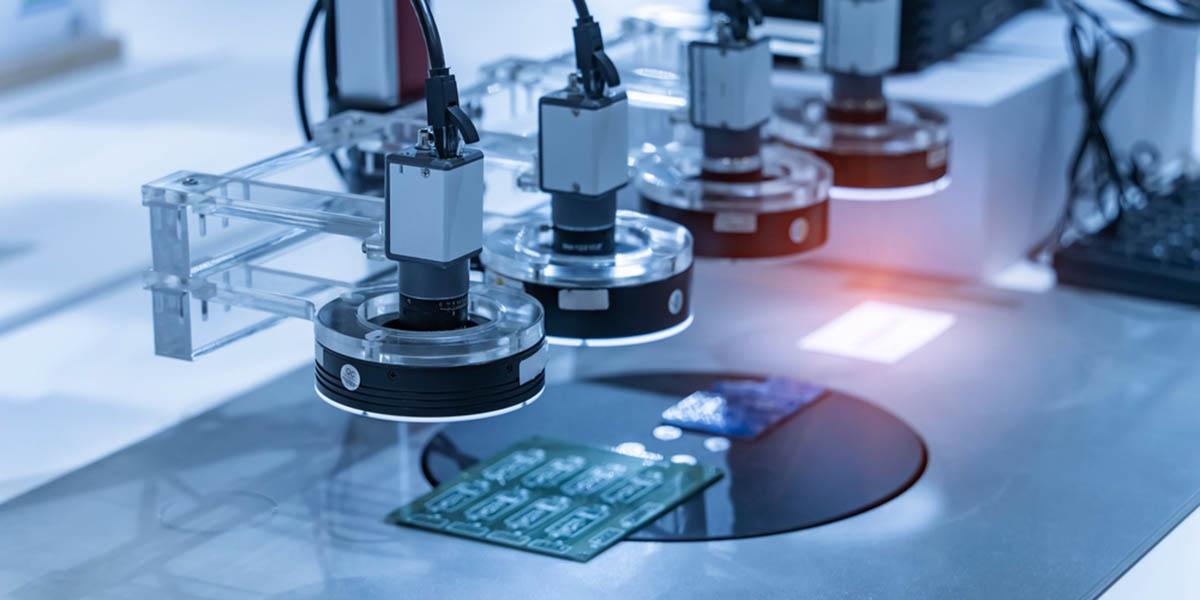Is your production line ready for fibre testing equipment? Here’s how to tell
The Importance of an Optical Measurement System in Industrial Applications
Optical measurement systems play an important function in industrial applications. They offer high precision and facilitate non-contact measurement, which is essential for safeguarding delicate components. These systems improve operational efficiency and advertise top quality control. Their implementation is not without difficulties. Comprehending their significance and the intricacies included can brighten their transformative potential in modern-day production. What are the certain benefits and difficulties that these systems present?
Comprehending Optical Measurement Systems
Optical measurement systems play a crucial duty in different industrial applications by supplying exact and precise information collection. These systems use light to gauge physical residential properties such as measurements, surface profiles, and material attributes. The fundamental elements usually include lasers, cameras, and sensors that record and analyze light shown from things. By employing techniques such as interferometry and photogrammetry, these systems can find minute changes fit and size, which are important for quality assurance and product consistency.Furthermore, optical measurement systems are non-contact, permitting them to examine delicate or elaborate products without triggering damage. They are functional, locating applications in fields like aerospace, vehicle, and electronics producing. The combination of sophisticated software program for data evaluation boosts the functionality of these systems, making it possible for real-time monitoring and comments. As markets advance, the relevance of optical measurement systems proceeds to grow, supporting the need for higher accuracy and performance.
Trick Benefits of Optical Measurement in Manufacturing
While standard measurement approaches frequently include physical contact and can present mistakes, the fostering of optical measurement systems in making deals substantial benefits. These systems make use of non-contact strategies, reducing the risk of damage to sensitive components and making sure the honesty of dimensions. Optical measurement gives high accuracy and precision, enabling producers to accomplish limited tolerances vital in affordable markets.Additionally, the rate of optical measurement systems improves performance. fibre testing equipment. Fast information acquisition enables real-time tracking, facilitating prompt adjustments in manufacturing procedures. This performance leads to reduced waste and enhanced source allocation.Furthermore, the versatility of optical systems fits a vast array of products and geometries, making them suitable for different applications. Their capacity to integrate effortlessly with automation modern technologies supports Market 4.0 campaigns, advertising smarter producing environments. On the whole, the vital advantages of optical measurement contribute substantially to improving quality control and functional performance in contemporary production settings
Applications of Optical Measurement Systems
Optical measurement systems play a necessary duty in various commercial applications, especially in improving precision throughout manufacturing procedures. They are essential to quality assurance and assurance, guaranteeing that items meet rigid standards. Furthermore, these systems support research study and advancement efforts by giving exact information for innovation and enhancement.
Precision in Production Processes
In modern-day production, high accuracy is crucial for making certain item top quality and functional performance. Optical measurement systems give innovative capacities that significantly boost precision during the production procedure. These systems utilize light and imaging innovations to catch thorough measurements of components, allowing suppliers to achieve tight tolerances and exact dimensions. By integrating optical measurement right into production workflows, organizations can promptly identify variances from specifications, consequently lowering waste and reducing rework. The non-contact nature of optical measurements permits for inspecting fragile or sensitive products without danger of damages. Inevitably, the adoption of optical measurement systems promotes a culture of accuracy in manufacturing, leading to boosted performance and competition in the market.

Quality Control and Assurance
Quality control in manufacturing greatly depends on specific measurement strategies to ensure that products meet established standards. Optical measurement systems play a crucial duty in this process, allowing accurate analyses of dimensions, surface top quality, and other critical attributes of produced goods. By using high-resolution imaging and innovative analysis algorithms, these systems detect inconsistencies from specs, guaranteeing uniformity throughout manufacturing. Additionally, optical dimensions can be non-destructive, maintaining the stability of items while promoting rapid analyses. The assimilation of these systems into top quality control methods enhances efficiency and minimizes waste, ultimately adding to enhanced product reliability. As sectors endeavor for quality, the fostering of optical measurement innovations becomes progressively important for keeping competitive benefit and customer complete satisfaction.

Research and Advancement Applications
As markets undertaking for development, optical measurement systems have become an important device in r & d applications. optical fibre diameter analyser. These advanced systems give exact measurements of products and components, enabling engineers and researchers to get critical insights into their buildings and efficiency. Optical measurement technologies, such as laser scanning and interferometry, help with the rapid prototyping of new styles and the optimization of existing products. By capturing high-resolution information, scientists can recognize problems and analyze the influence of different parameters on item functionality. Furthermore, these systems support interdisciplinary partnership, connecting gaps between various fields of study. The combination of optical measurement systems right into R&D processes inevitably accelerates development timelines and fosters the production of sophisticated services in various commercial markets
Comparing Optical Measurement to Traditional Approaches
In comparing optical measurement systems to typical techniques, several crucial elements arise, including accuracy and accuracy. In addition, the rate of measurement and cost-effectiveness play substantial duties in identifying the suitability of each strategy for industrial applications. This assessment highlights just how advancements in optical modern technology may use benefits over traditional strategies.
Accuracy and Accuracy
Optical measurement systems use substantial advantages in precision and accuracy compared to conventional measurement techniques. These systems make use of sophisticated innovation, such as lasers and high-resolution electronic cameras, to capture dimensional information with marginal mistake. On the other hand, standard methods often depend on mechanical devices that can present irregularity because of human mistake or material wear. Optical systems can accomplish micrometer-level accuracy, guaranteeing regular results also in complex geometries. Furthermore, they provide non-contact measurement, minimizing the risk of damaging sensitive parts. This capability is especially beneficial in markets where tolerances are essential, such as aerospace and automotive manufacturing. The adoption of optical measurement modern technology enhances top quality control and decreases the possibility of defects, inevitably improving general manufacturing performance.
Speed of Measurement
The benefits of optical measurement systems prolong beyond precision and precision to include considerable renovations in measurement speed. Standard measurement techniques typically call for lengthy arrangements and hands-on computations, which can decrease production procedures. On the other hand, optical systems utilize advanced innovations such as laser scanning and imaging, allowing fast information acquisition and processing. This efficiency permits real-time dimensions, promoting quicker decision-making in producing environments. The capacity to record large quantities of information in a short time boosts throughput and efficiency, offering companies an one-upmanship. In addition, with lowered measurement times, optical systems decrease downtime related to evaluations, further enhancing procedures. As a result, the rate of measurement in optical systems considerably adds to total operational effectiveness in commercial applications.
Cost-Effectiveness Evaluation
An extensive cost-effectiveness evaluation exposes that optical measurement systems usually supply substantial monetary benefits over conventional approaches. These systems generally lower the need for substantial physical arrangements, minimizing labor prices and downtime during measurement processes. Optical approaches can also generate faster results, causing raised productivity and minimized operational costs. Additionally, the accuracy offered by optical dimensions decreases the chance of expensive errors, which can arise from manual treatments and typical techniques. In the future, the preliminary financial investment in optical modern technology is commonly balanced out by cost savings in sources, time, and enhanced product top quality. Subsequently, sectors that embrace optical measurement systems may locate themselves not just boosting effectiveness yet likewise achieving a more favorable cost-benefit proportion compared to traditional techniques.

The Function of Automation in Optical Measurement
While numerous sectors progressively rely upon accuracy and effectiveness, automation has become a crucial part in enhancing optical measurement processes. By incorporating automated systems, companies can useful source significantly enhance measurement precision and reduce human error. Automated optical measurement systems use innovative formulas and sensors to offer real-time data evaluation, promoting quicker decision-making and procedure adjustments.Additionally, automation permits consistent measurements across numerous production runs, making certain that quality requirements are kept. The scalability of automated optical measurement systems makes them ideal for diverse applications, from quality control in producing to inspection in semiconductor production.Furthermore, these systems can be perfectly incorporated right into existing manufacturing configurations, advertising a smooth change towards much more reliable operations. In general, the function of automation in optical measurement is crucial, supplying enhanced reliability, decreased labor expenses, and enhanced functional effectiveness, eventually driving commercial competitiveness.
Difficulties and Considerations in Application
Executing optical measurement systems, even with the advantages of automation, presents various difficulties and factors to consider that companies need to browse. One significant challenge is the integration of these systems into existing workflows, which may require substantial changes in processes and employee training. Organizations should additionally resolve the compatibility of optical measurement modern technologies with existing tools and software.Additionally, the irregularity of products and ecological conditions can impact measurement accuracy, requiring robust calibration and maintenance methods. Expense is one more crucial consideration, as first financial investments can be substantial, and organizations must consider these prices against potential efficiency gains. Information monitoring likewise positions challenges, as the volume of information generated needs efficient systems for storage space, analysis, and analysis. Ultimately, making sure conformity with market requirements and policies adds an additional layer of complexity to the application process, calling for cautious planning and implementation.
Future Fads in Optical Measurement Innovation
As sectors remain to progress, innovations in optical measurement innovation are set to transform their operational landscapes. Emerging trends suggest a change towards raised automation and integration with fabricated intelligence, improving the precision and effectiveness of dimensions. Adaptive optics is getting grip, enabling systems to readjust in real-time to varying environmental problems, thereby lessening errors. The miniaturization of optical sensing units is allowing their release in much more small and varied setups, expanding application chances in markets such as aerospace and manufacturing.Additionally, the growth of 3D optical measurement techniques is transforming high quality control processes, supplying even more substantial information analysis. Advancements in data processing formulas are also expected to improve the analysis of complicated measurements, making insights much more easily accessible. Collectively, these patterns mirror a future where optical measurement technology not just boosts accuracy but also enhances operational dexterity, placing sectors to much better satisfy developing demands.
Regularly Asked Inquiries
Just How Do Optical Measurement Solutions Ensure Information Accuracy?
Optical measurement systems guarantee data precision with accurate calibration, advanced formulas, and high-resolution imaging. These parts collaborate to minimize mistakes, enhance measurement consistency, and provide reliable outcomes necessary for different industrial applications and procedures.
What Is the Regular Life Expectancy of an Optical Measurement System?
The normal lifespan of an optical measurement system differs, often varying from 5 to fifteen years. Elements affecting longevity include use strength, environmental problems, upkeep practices, and technical innovations that may require upgrades or substitutes.
Can Optical Measurement Equipments Be Customized for Certain Industries?

What Training Is Required for Operating Optical Measurement Systems?
Training for operating optical measurement systems normally consists of understanding system elements, software application use, calibration methods, data visit here analysis, and security protocols. description Participants often involve in hands-on technique and might finish accreditation programs to enhance their proficiency.
Just How Do Ecological Aspects Affect Optical Measurement Outcomes?
Environmental variables, such as temperature level, humidity, and lighting problems, considerably influence optical measurement outcomes. Variations in these components can cause inaccuracies, influencing the accuracy and reliability of dimensions taken by optical systems in different settings.